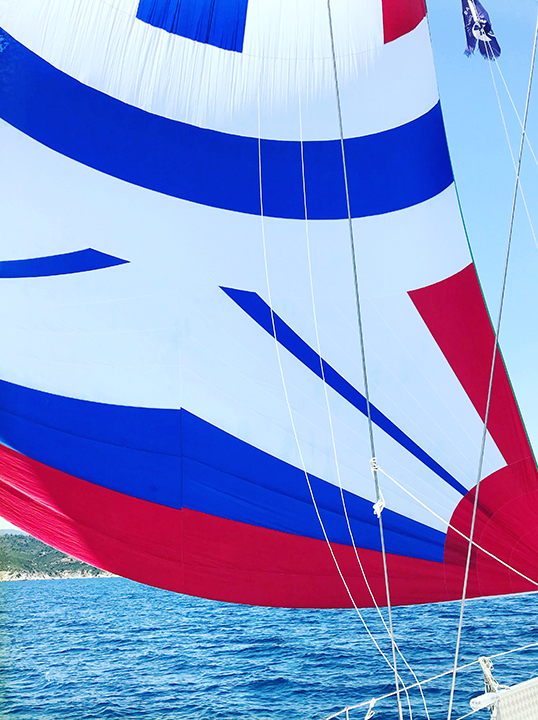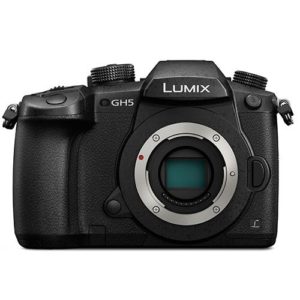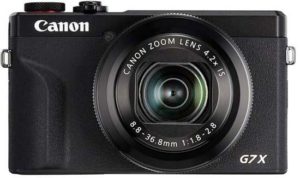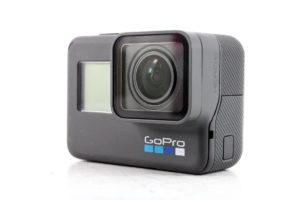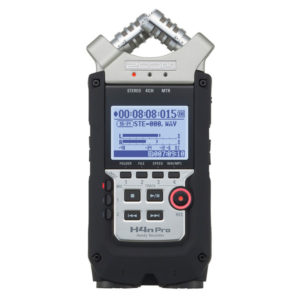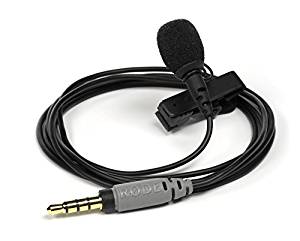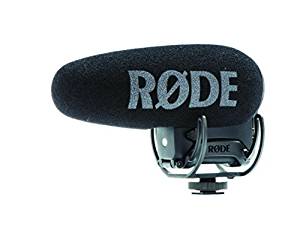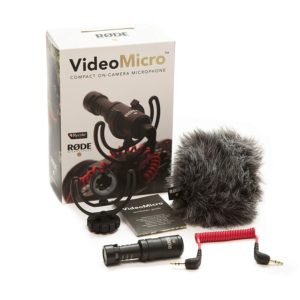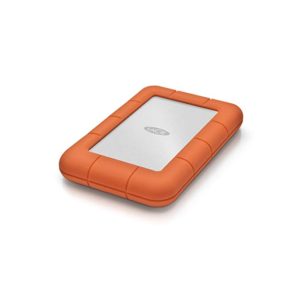Posts in Category: C&J Extras
The Ultimate Boat Prep Guide: 7 Tips to Wow Your Guests!
Welcome aboard!
In this week’s Patron only J-Log, I’m going to share some fantastic tips that will wow your guests.

Are you ready to impress your guests with a perfectly prepared boat? Look no further! In this must-watch video, we bring you the ultimate boat prep guide packed with 7 tips that will leave your guests in awe. From creating a welcoming ambiance to ensuring their safety and comfort, we’ve got you covered.
Join us as we dive into the art of boat preparation, transforming your vessel into a luxurious haven that will rival a 5-star hotel. Discover the secrets to decluttering and organizing your boat, making every corner a picture of pristine beauty. You’ll learn the importance of stocking up on provisions that cater to your guests’ preferences, ensuring that no craving goes unanswered during their stay.
But it doesn’t stop there! Safety is a top priority, and our experts will guide you through essential checks of life jackets, fire extinguishers, and other safety equipment, guaranteeing peace of mind for you and your guests. We’ll also show you how to set up inviting seating areas on the deck, complete with shaded spaces for relaxation and breathtaking views.
Want your guests to feel pampered? We’ve got you covered. Discover our tips for creating cozy and inviting guest cabins, complete with fresh linens and personal touches that will make your guests feel truly special. Plus, we’ll help you plan the perfect itinerary, sharing essential information about navigation rules and safety procedures, ensuring a smooth and enjoyable journey for everyone.
Don’t forget the entertainment! We’ll reveal creative options to keep your guests entertained, whether it’s music, books, board games, or water sports equipment. And of course, we’ll show you how to set a stunning table in the dining area, complete with elegant tableware and charming decorations, turning mealtime into a memorable experience.
Get ready to become the ultimate boat host with our expert tips and tricks. Don’t miss out on this essential guide to wowing your guests and creating unforgettable moments onboard.
If you’d like to watch this and over 250 other Patron only videos head over to our Patreon channel at Patreon.com/carlandjenny from less than the cost of a cup of coffee per month. We publish at least two Patron only videos per week as well as other posts.
Don’t forget to like, comment, and subscribe for more sailing tips and adventures! Hit the notification bell 
Jenny
Med Mooring Made Easy!
Welcome aboard!
In this week’s Patron only J-Log, I’m going to share some fantastic tips that will make stern-to-mooring a breeze.
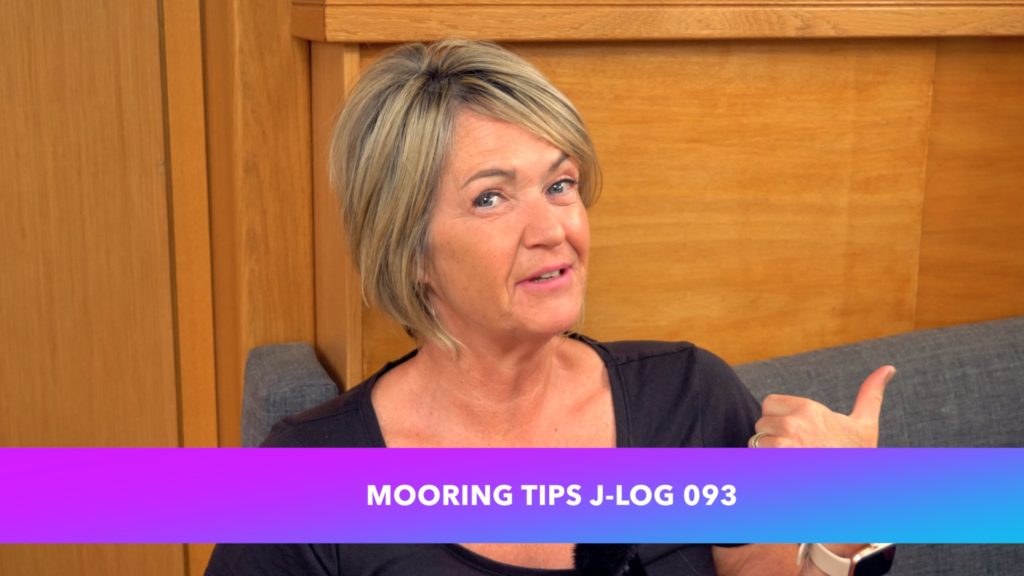
Welcome aboard! I’m thrilled to have you here as we embark on a delightful journey to explore the ins and outs of stern-to-mooring. Now, I know what you’re thinking: “Whoa, that sounds like a whole lot of maneuvering!” But don’t you worry, my nautical friends, because I’ve got your back, or should I say, your stern!
Today, I’m going to share some fantastic tips that will make stern-to-mooring a breeze. We’ll tackle it with a sprinkle of humor, a pinch of laughter, and a boatload of confidence. So grab your favorite deck chair, find a cozy spot, and get ready to navigate these waters like a pro!
Picture this: you’re approaching the dock, the sun glistening on the water’s surface, and a gentle breeze tousling your hair. As you gracefully glide towards your mooring spot, you’ll be armed with the knowledge and techniques to make it a flawless docking experience. Believe me, when you master stern-to-mooring, you’ll be the envy of all your fellow boaters.
But hey, we won’t keep you waiting any longer! Get ready to discover those handy tips that will make stern-to-mooring a piece of cake. So, let’s set sail on this adventure together, blending the thrill of learning with the joy of being out on the open water. Get those sea legs ready, my friends, because we’re about to dive into the art of stern-to-mooring like never before!
So, tighten those life vests, adjust your captain’s hat, and prepare to become the ultimate stern-to-mooring maestro. Our ship is about to set sail into uncharted waters of knowledge and skill. Get ready to rock those mooring lines like a boss and impress everyone who sets eyes on your docking prowess.
Without further ado, let’s weigh anchor and delve into these marvelous tips that will have you docking with finesse in no time! Are you ready to become the star of the marina? Let’s hoist those sails and embark on this unforgettable journey of stern-to-mooring mastery!
If you’d like to watch this and over 250 other Patron only videos head over to our Patreon channel at Patreon.com/carlandjenny from less than the cost of a cup of coffee per month. We publish at least two Patron only videos per week as well as other posts.
Don’t forget to like, comment, and subscribe for more sailing tips and adventures! Hit the notification bell 
Jenny
If you enjoyed this blog post please check out our Freebies page where you can download other guides, and if you’re feeling really good consider having a look at our Support us page.
The Healing Power of Sailing: Reducing Stress and Enhancing Wellbeing Through the Art of Seamanship
The Healing Power of Sailing
Sailing is a wonderful activity that provides a sense of freedom, adventure, and excitement. The wind in your hair, the sound of the waves, and the feel of the boat gliding through the water can be truly exhilarating. But beyond the thrill of the experience, sailing has a range of benefits for your wellbeing, from reducing stress to improving mental and physical health.
One of the key benefits of sailing
One of the key benefits of sailing is its ability to reduce stress. Sailing provides a sense of escape from the pressures of daily life, allowing you to disconnect from work and other responsibilities and immerse yourself in the present moment. Being out on the water also provides a sense of calm and tranquility, helping to lower stress levels and promote relaxation.
In addition to reducing stress, sailing can also have a positive impact on mental health. The experience of being out on the water can help to boost mood and alleviate symptoms of depression and anxiety. The combination of fresh air, natural surroundings, and physical activity can help to release endorphins and other mood-boosting chemicals in the brain, leading to an overall sense of wellbeing.
Sailing can also be a great way to improve physical health
Sailing can also be a great way to improve physical health. Sailing requires a range of physical skills, from balancing on a moving deck to hoisting sails and maneuvering the boat. These activities provide a full-body workout that can help to build strength, flexibility, and cardiovascular fitness.
Sailing can also be a great way to get outside and enjoy nature. Being out on the water provides an opportunity to connect with the natural world and appreciate its beauty and tranquility. Whether it’s watching a sunset over the water or spotting wildlife in their natural habitat, sailing can be a great way to experience the outdoors and cultivate a sense of wonder and awe.
Another benefit of sailing is its ability to promote social connection and community.
Another benefit of sailing is its ability to promote social connection and community. Sailing often involves working as part of a team, whether it’s with friends, family, or fellow sailors. This collaboration and shared experience can help to build relationships and foster a sense of community and belonging.
Sailing can also be a great way to challenge yourself and push your limits
Sailing can also be a great way to challenge yourself and push your limits. Whether it’s learning a new sailing technique, navigating challenging weather conditions, or competing in a regatta, sailing provides a range of opportunities to set goals and achieve personal growth.
Overall, sailing is a wonderful activity that provides a range of benefits for your wellbeing. From reducing stress and improving mental health to promoting physical fitness and fostering social connection, sailing has something to offer for everyone. So whether you’re an experienced sailor or a first-time adventurer, consider giving sailing a try and experience the joy and wellbeing benefits for yourself.
Of course, as with any activity, it’s important to take proper safety precautions when sailing. Make sure to familiarize yourself with the boat and sailing equipment, wear appropriate safety gear, and be aware of weather conditions and other potential hazards. By prioritizing safety and responsibility, you can enjoy all the benefits of sailing while also ensuring a safe and enjoyable experience for yourself and those around you.
In conclusion
In conclusion, sailing is a wonderful activity that provides a range of benefits for your wellbeing. From reducing stress and improving mental health to promoting physical fitness and fostering social connection, sailing has something to offer for everyone. So whether you’re looking for a new adventure, a way to connect with nature, or simply a way to relax and unwind, consider giving sailing a try and experience the joy and wellbeing benefits for yourself.
Next week; “The Benefits of Naturism on Boats: Exploring the Freedom and Wellness of a Clothing-Optional Lifestyle at Sea“. Be sure to join us then.
Fair winds and calm seas
Carl and Jenny
f you enjoyed this blog post please check out our Freebies page where you can download other guides, and if you’re feeling really good consider having a look at our Support us page.
5 Tips for extras you may need when antifouling your boat
Ahoy, fellow sailors! 🌊⛵️ In today’s Patron only J-Log video, we’re sharing our top 5 tips for extras when antifouling your boat, ensuring it stays in tip-top shape and ready for your next adventure. Join Jenny as we dive into the world of boat maintenance and protection.
In this video, we’ll cover items you might not consider prior to antifouling:
- Choosing a foldable seat 🎨🛥️
- Properly protecting your boat’s hull for antifouling application, get some tie wraps 🧹🔧
- Techniques for protectio, Sticks and cardboard. 🖌️🔄
- Cleaning products ⚓️📆
- Music/radio/podcasts – entertainment. 🌱🌍
If you’d like to watch this and over 200 other Patron only videos head over to our Patron channel at Patreon.com/carlandjenny from less than the cost of a cup of coffee per month. We publish at least two Patron only videos per week as well as other posts.
Don’t forget to like, comment, and subscribe for more sailing tips and adventures! Hit the notification bell 🔔 to stay updated on our latest content. Let’s set sail and make this summer one to remember! ⛵️🌞🌴
Carl and Jenny
If you enjoyed this blog post please check out our Freebies page where you can download other guides, and if you’re feeling really good consider having a look at our Support us page.
Unleashing the Power of the Gennaker: A Guide to Sailing with Speed and Efficiency
Sailing with a gennaker sail
Sailing with a gennaker sail is an exciting and rewarding experience that can add a whole new dimension to your sailing adventures. Gennakers are specialized sails that are designed for downwind sailing and can provide a significant boost in speed and power, making them a popular choice among sailors who enjoy racing or cruising.
Gennakers are often described as a hybrid between a spinnaker and a genoa. They have a larger surface area than a genoa and a flatter shape than a spinnaker, which allows them to generate lift and power in a variety of wind conditions, even when sailing downwind. Gennakers are typically asymmetric, meaning that they have a distinct leading and trailing edge. This shape allows them to generate lift and power in a variety of wind conditions, even when sailing downwind. Gennakers are also relatively flat, which helps them to maintain their shape and efficiency in light winds.
One of the primary benefits of a gennaker sail
One of the primary benefits of a gennaker sail is that it is designed to be flown in light to moderate winds, typically ranging from 5 to 20 knots. This makes it ideal for sailing in conditions where other sails may not provide enough power to maintain speed or maneuver effectively. Gennakers are also designed to be easy to handle, with a shape that allows them to be hoisted and lowered quickly and without fuss.
Sailing with a gennaker requires some specific skills and techniques, particularly when it comes to hoisting and trimming the sail. To hoist a gennaker, you’ll need to attach the halyard to the sail and raise it up the mast. As the sail rises, you’ll need to trim the sheet to ensure that the sail is properly aligned and generating the maximum amount of power.
Once the gennaker is hoisted, it’s important to trim the sail correctly to ensure that it is providing the maximum amount of power. This typically involves adjusting the sheet to control the angle of the sail relative to the wind, as well as adjusting the tack and clew to optimize the sail’s shape and efficiency.
One of the key challenges of sailing with a gennaker
One of the key challenges of sailing with a gennaker is knowing when to use it. Gennakers are designed to be used in specific wind conditions, and it’s important to know when they will be most effective. In general, gennakers are best used when sailing downwind in light to moderate winds. They can also be effective when sailing on a broad reach, although this will depend on the specific sail design and the wind conditions.
Another key consideration when sailing with a gennaker is safety. Gennakers can generate a significant amount of power, particularly in strong winds, and it’s important to know how to control the sail and manage the boat in these conditions. This may involve reducing sail area, adjusting the boat’s course, or using other techniques to manage the sail’s power and prevent accidents.
One of the most important aspects of sailing with a gennaker
One of the most important aspects of sailing with a gennaker is knowing how to trim the sail correctly. The key to getting the most out of a gennaker is to ensure that it is flying at the correct angle relative to the wind. This will typically involve adjusting the sheet to control the sail’s shape and angle of attack.
When trimming a gennaker, it’s important to keep an eye on several factors, including the sail’s luff tension, the twist of the sail, and the angle of attack. The luff tension should be adjusted to keep the sail’s leading edge straight and smooth, while the twist should be adjusted to ensure that the sail is not overpowered in strong winds. The angle of attack should be adjusted to ensure that the sail is generating the maximum amount of power without stalling.
Another important consideration when sailing with a gennaker
Another important consideration when sailing with a gennaker is boat speed. Gennakers are designed to provide a significant boost in boat speed, particularly when sailing downwind or on a broad reach. However, it’s important to keep an eye on boat speed and adjust the sail trim as necessary to maintain optimal performance.
If the boat is moving too slowly, it may be necessary to ease the sheet slightly to allow the sail to generate more power. Conversely, if the boat is moving too quickly, it may be necessary to trim the sail more tightly to reduce drag and maintain control.
Another important factor to consider when sailing with a gennaker
Another important factor to consider when sailing with a gennaker is wind direction. Gennakers are designed to be flown at specific angles relative to the wind, and it’s important to adjust the sail trim as necessary to maintain the correct angle of attack.
In general, gennakers are best flown at angles of between 90 and 135 degrees relative to the wind. This allows the sail to generate maximum lift and power while still maintaining control.
As with any sail, it’s also important to monitor the wind conditions and adjust sail trim as necessary to ensure optimal performance. This may involve adjusting the sail’s shape or angle, or it may involve changing course to take advantage of shifts in wind direction.
Sailing with a gennaker can be a challenging and rewarding experience
Sailing with a gennaker can be a challenging and rewarding experience, and it’s important to have the right skills and equipment to do it safely and effectively. If you’re new to gennaker sailing, it’s a good idea to start with smaller sails and lighter winds, and to practice hoisting and trimming the sail in a safe and controlled environment.
As you become more experienced, you can gradually increase the size of your gennaker and sail in more challenging conditions. However, it’s always important to prioritize safety and to be prepared to adjust sail trim and reduce sail area as necessary to manage the sail’s power and prevent accidents.
In conclusion, sailing with a gennaker
In conclusion, sailing with a gennaker sail is a thrilling and rewarding experience that can add a whole new dimension to your sailing adventures. Gennakers are designed to provide maximum power and efficiency in light to moderate winds, and they require specific skills and techniques to hoist and trim effectively.
If you’re interested in gennaker sailing, it’s important to start with smaller sails and lighter winds and to practice hoisting and trimming the sail in a safe and controlled environment. As you become more experienced, you can gradually increase the size of your gennaker and sail in more challenging conditions.
By mastering the skills and techniques of gennaker sailing, you’ll be able to enjoy the thrill of faster boat speeds and more efficient downwind sailing, while also ensuring the safety of yourself, your crew, and your boat.
Fair winds,
Carl and Jenny
If you enjoyed this blog post please check out our Freebies page where you can download other guides, and if you’re feeling really good consider having a look at our Support us page.
Photography and Film equipment we use on board.
Photography and Filming gear we use on board
As YouTubers we need a fair amount of filming and photography equipment. We thought we would write a blog post explaining the Photography and Filming gear we use on board of Dream.
The equipment we use is what we have built up over a period of time. We were fortunate that we ran a wedding photography and film company and so had a massive amount of equipment. So much so that we had to sell quite a lot of equipment before we moved aboard as we just didn’t have room to store it all, along with the fact that we didn’t need it all any more.
We are not going to make this blog post too technical as it would go on forever. This is just to give you an idea of what we use to bring you the videos we put out.
So, lets break it up into different pieces of kit:
Filming and Photography
Panasonic Lumix GH5
This is our main camera. This camera is a micro four thirds camera, good for still photography, but a fantastic camera for film use. It’s not too heavy so its comfortable for long shoots, has all the ‘Pro’ features you need. It films in 4K which is now the standard and has more features than most people would ever need. Combined with some ‘fast’ lenses this camera takes some beating. We have pre-sets on ours that can even film in slow motion to a good standard.
Canon G7X mk2
The canon G7X is a compact camera which is easy to carry around, is self contained and comes in a small package. It has a built in lens which has a built in zoom. The great thing about this camera is that it has a screen that can be flipped up so if you are using it in selfie mode you can see what you are recording. We tend to use this camera when we are out and about. The battery life is good and can last for a full day (not continuous). This model only records in High Definition 1080, the new model records in 4K so we may have to update at some point in the future.
GoPro Hero 6 Black
The GoPro is the action camera we use. We have had this one a couple of years now which we bought to upgrade our older model, the Hero 3 Black. The battery life on the 6 is so much better. The Hero 6 Black is waterproof without having to use a special case so is ideal for boat life. Small enough to keep in your pocket and can be ready almost instantly to use. Downside is lowlight filming is a bit noisy, but the capabilities of where you can film with this camera is endless. It’s also voice activated, so you can fit it in a position where you don’t need to reach it, give it a voice command and you can film or take pictures without having to touch it.
Panasonic LUMIX DMC – FT3
This is another waterproof HD camera. No moving parts, slimline and also has a built in GPS. We don’t use the GPS. For quick, instant filming/photos, this is ideal.
DJI Osmo Pocket
This is a new addition to our kit list. The DJI Osmo Pocket is a 4K gimballed camera that gives excellent stabilisation. Just what you need in rough seas lol! We haven’t used this yet in any of our videos but we are looking forward to using it soon.
DJI Mavic Pro Drone
The Mavic Pro is a great Drone with some great features. We don’t use it as much as we should do and promise that next season we will be using it a lot more.
Audio
Sometimes we use external audio recording. if we have a noisy background or are further away from the camera then an external recorder and microphone is how we get around it. The other option we have is to use an external microphone on top of the LUMIX GH5.
Wireless Lavalier Microphones and receiver
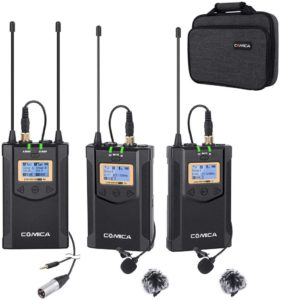
The wireless mics are a great addition to the kit. We can wear these when out and about. You don’t need to be right next to the camera, you can be 100 metres away. These ensure that you capture the sound you want. You do need to connect the receiver to your camera or a seperate audio recorder, and then sync in post.
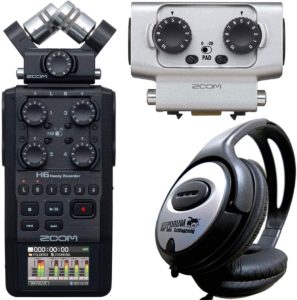
The Zoom H6 is a portable recording studio you can carry anywhere. It has built in microphones and several inputs for extra microphones, headphones or even musical instruments. It records in MP3 and wav files. The sound quality is excellent. We can use this as a standalone recorder or connect it to our computer and use it as an audio interface when recording podcasts or producing music. A great piece of kit and offers that bit more than the older H4we have.
Zoom H4 Audio Recorder
Much like the H6, the Zoom H4 is a portable recording studio you can carry anywhere. It has built in microphones and several inputs for extra microphones, headphones or even musical instruments. It records in MP3 and wav files. The sound quality is excellent. This is our older version, it still does a good job but the H6 offers a bit more.
Zoom H1 Audio Recorder
The Zoom H1 is a portable recorder. It is a one button record system. Again built in mics and a headphone socket so you can monitor your recording and a jack plug where you can plug in an external mic. This one is really small so will fit in any pocket and is easy to hide from view.
Rode Smart Lavalier Microphone.
This microphone has great audio qualities. It’s very small so you don’t even know you are wearing it. It is designed to be used with the Rode recording App on an iPhone. To use it with the Zoom or other recorders you need to purchase the small adapter plug by Rode. The iPhone has 5 terminals on a jack plug and the recorders only need 4. The adapter converts it from 5 to 4 so it works correctly.
Rode VideoMic pro
This fits to the hot shoe of the GH5 camera. It requires a 9Volt battery. It plugs into the microphone socket on the camera. The downside to this mic is if you forget to switch it on, or the battery runs out you don’t get any audio recorded.
Rode Micro
Similar to the Video mic pro but does not require any power. This is ideal because you don’t have to worry about batteries or losing audio. The quality is quite good, it’s also a small convenient size and it has a ‘Dead cat’ to cut down on wind noise.
Editing
We have used different editing software packages. Adobe Premiere and Final Cut Pro X. Now we use Mac computers and Final Cut pro X for all of our editing now.
One of the reasons we no longer use Adobe as they moved over to a subscription only package.
Hard Drives
We also require Hard drives for storing all the footage we record onto. The ones we use mainly for storage and editing now are the LaCie Rugged hard drives. These are shock proof and come in a nice rubber protected case.
We have quite a bit more equipment than this, extra camera bodies, desk mics, lights etc etc. Not to mention all the spare batteries, memory cards, mounts, tripods, monopods. The list goes on.
If you enjoy watching our videos and would like to help support the production of them you can become a Patron by clicking on this LINK. as a Patron you get access to lots of extra videos and other perks depending on what tier you join. There is a tier for everyone.
If you click on any of the links of the equipment we have featured and order anything from Amazon, we get a small commission from amazon at no extra cost to you. It just puts a few coppers into our Amazon affiliate account, which we use to upgrade and replace the equipment we use for filming. If you have any questions about any of the kit we use please comment below and we will get back to you as soon as we can.
Fair winds,
Carl and Jenny
If you enjoyed this blog post please check out our Freebies page where you can download other guides, and if you’re feeling really good consider having a look at our Support us page.
Realities of YouTube Production
The truth behind the myth
Sell up, buy a boat, set sail and set up a YouTube channel. Never work again! In this blog post we give you the truth behind the myth.
In the last couple of years sailing channels have flooded the market on YouTube. Probably one of the reasons is that a handful of channels got on the bandwagon really early and got a lot of followers who have remained loyal to them and as a result they make a good living from it. The problem now is that everyone thinks that if they buy a boat and start a YouTube channel they can give up their jobs set sail and they’ll never have to work again! What they don’t realise is that the channels who are making money from YouTube and Patreon are working as full time video producers. Not quite the retirement they are expecting. Editing footage that you have recorded, exporting it, uploading to YouTube, adding text, custom thumbnails etc all takes time, at least 8-16 hrs for a fairly short video.
For people who just want to watch sailing videos, life experiences and adventures then the market is flooded. Some really good productions and some not so good productions. There is something for everyone out there. Unfortunately for the video creators, getting noticed now is getting harder and harder due to the number of creators there are.
Whilst we love creating videos for YouTube it is not a cheap hobby. Yes we do get a small income from Patreon which helps with the costs a little but it doesn’t pay a wage. A lot of people are under the misconception that because adverts are part of YouTube playbacks then the creators must be making lots of money. In reality unless you are getting 100’000’s of views per video then we are looking at cents/pence per thousand views. Hardly worth it because YouTube take their 50% of anything you make. Hence the reason a lot of people now offer a Patreon page.
On our Patreon page we post our normal episodes earlier than they are released on YouTube, but we also produce our Patron only video series which we call our D-Log. There are currently around 40 D-Log videos on our Patron page at the moment. We also offer other perks depending on what tier our Patrons decide to join. All the funds we raise through our Patreon page goes back into video creation, whether it’s updating or replacing equipment or being put towards our ever increasing internet costs.
If you enjoy watching our videos and would like to help support the production of them you can become a Patron by clicking on this LINK. as a Patron you get access to lots of extra videos and other perks depending on what tier you join. There is a tier for everyone.
Fair winds,
Carl and Jenny
If you enjoyed this blog post please check out our Freebies page where you can download other guides, and if you’re feeling really good consider having a look at our Support us page.
DEPKA renewal
Renewing our DEPKA
It’s time for our yearly DEPKA renewal!
One of the things an EU registered boat requires when sailing in Greek waters is a DEPKA. This is basically to show you have registered with the Greek authorities that your boat is in Greek waters. It is renewable every 12 months. The renewing is free.
Ours was due to be renewed on the 13th November, but as I had a spare hour this morning, I decided to go and get it done today. Jenny was busy doing her keep fit exercises with some of the other liveaboards in the marina, so what better time?

The process
It’s quite a simple process. A trip down to the Port Police office (Coastguard) with the correct documents. It’s then just a formality of them photocopying your documents and stamping the DEPKA with a new date 12 months from now. I had to show the original DEPKA, TEPAI tax payment form (even though that expired at the end of October), the receipt for our SSR (small ships register certificate). We had to surrender ours to register the boat out of use over winter, otherwise we would have to pay the TEPAI for each month. My ICC and passport.
They will check and photocopy all of the documents. Once done they stamp your DEPKA and put a new expiry date which will be 12 months from the day they stamp it.

All in all it took around 10 minutes to get our DEPKA renewal and now we are good for the next 12 months in Greek waters. That is of course when we set off again at the beginning of the season and pay our TEPAI tax for the months we are in Greece.

All sorted!
If you enjoyed this blog post please check out our Freebies page where you can download other guides. If you’re feeling really good consider having a look at our Support us page.
A Voyage For Madmen
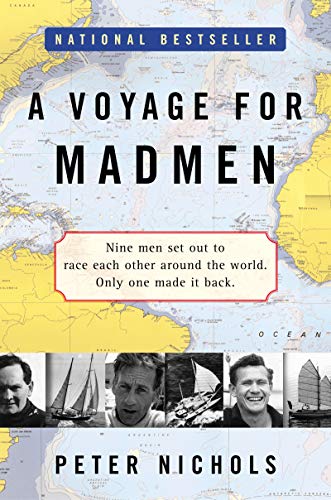
A Voyage For Madmen
A Voyage For Madmen
One of the things we do onboard Dream is read books. Lots of books. All genres, all authors, but I (Carl) in particular love to read sailing related books, mmm! wonder why that is?
I have been reading sailing related books since I was a kid, I think I still have the Robinson Crusoe and Treasure Island books in my parents attic. They used to take pride of place on my bedroom bookshelf as a kid. In fact I think the Treasure Island copy was one my Dad had as a kid! The Robinson Crusoe book was my “best book”. I can still remember the smell of it. A5 in size but approx three inches thick, red simulated leather cover with gold embossed binding and lettering. I can still remember the day my Dad bought it me. I daren’t bend back the pages for fear of spoiling it. But eventually I plucked up courage to read it. The most pages in a book I had ever read, back then.
Current Times
Nowadays, with space at a premium we restrict ourselves to actual paper books and instead opt for Kindle versions, apart from books such as pilotage and planning etc.
Now if you have never used a Kindle before, the first time you use one you will find it a bit strange, almost as if it’s not really a book. Well luckily it doesn’t last, and I can say now that I now find it strange to read a real paper book. The beauty of the Kindle, or any e-reader for that matter, is that you can always have it with you, the battery lasts for weeks, you can read it in the dark, ie, when you’re in bed and the other half wants to go to sleep, and now with the latest release you can read it in the bath, swimming pool etc as its now waterproof! Not forgetting to mention that you can have hundreds if not thousands of books all in that one device. You can even download the Kindle app to your iPad, iPhone, Android phone and tablets etc and read them there.
Anyway, back on topic, we thought because we read a lot of books that are sailing related, we would start and do a bit of a review of the books we read on our blog and let you know what we thought of them.
So we’ll kick it off with this first book;
A VOYAGE FOR MADMEN by Peter Nichols
So what’s the story? To quote Amazon:
In 1968, nine sailors set off on the most daring race ever held: to single-handedly circumnavigate the globe nonstop. It was a feat that had never been accomplished and one that would forever change the face of sailing. Ten months later, only one of the nine men would cross the finish line and earn fame, wealth, and glory. For the others, the reward was madness, failure, and death.
In this extraordinary book, Peter Nichols chronicles a contest of the individual against the sea, waged at a time before cell phones, satellite dishes, and electronic positioning systems. A Voyage for Madmen is a tale of sailors driven by their own dreams and demons, of horrific storms in the Southern Ocean, and of those riveting moments when a split-second decision means the difference between life and death.
Well my thoughts on the book were quite good. I have read all the books based around the Golden Globe race. This one is a bit of a compilation of all the individual books. Whilst it lacks a little in in depth detail, as an all round book it covers the story quite well. If you haven’t got time to read all the different books by different sailors involved in the original Golden Globe race then this is the one for you. It gives accounts from each of the sailors, and covers the unfortunate story also of Donald Crowhurst, who’s story has been made into two or three films so far.
Would I recommend this book? Yes I would. The book discusses the fate of each sailor in turn. Using well described words, Nichols describes how the nine sailors fought through storms and collisions, through the roaring 40s and the furious 50s, and how each man experienced those moments of solitary despair, lonely disappointment and occasional mystical elation that are unique to long-haul solo sailing. One of the most commendable features of the book is the way Nichols discusses the technical side of yachtsmanship with verve and passion without ever turning into an anorak. This is a fine and absorbing true-life tragicomedy, suitable for landlubbers and sea dogs alike.
Should you buy it? Well yes you should. Order it as a Kindle book, sit down with a hot mug of tea, or whatever else you fancy and settle down for a good read. I finished the book in three sessions I was that engrossed by the writing style and the actual storyline. It’s just a shame the final ending couldn’t have been a little bit different and happier.
If you want to get a copy of the book you can click on the link below. This will take you straight to the page on Amazon. I’ve also added a link where you can buy the latest waterproof edition of the Kindle.
Leave a comment below and let us know what you think of the book and please let us know of your favourite sailing related book(s).
Have you watched our latest video yet? If not you can see it here.
5 Gifts for the Sailor in your life
A question i’m asked three times a year, what would you like?
The three times are Christmas, Birthday and Fathers Day, and normally each time I say, “oh suprise me”.
What happens? I end up getting a shirt that’s too small, socks that are too big or something that will probably never get used. Oh and then there’s always the “safe” present, a pack of beer or a bottle of rum. Well you can’t go wrong with those last two can you?
As we get further towards the end of this year, the adverts have already started, the “C” word jumpers are already starting to make an appearance, in fact just the other day I saw an advert for the latest thing this year, again the “C” word skirt! I can’t see many men buying into that, but hey in today’s society, one never knows!
Well we all know what it’s like shopping for someone else don’t we? We want to get something nice, something different, but we really don’t have a clue. Well put that behind you, because if you know someone who is a sailor, (and the chances that you do are pretty high otherwise you wouldn’t have got this far already), then read on!
We have spent a few hours trolling the internet, to save you having to do it, for what could be an ideal gift for your sailor, or even yourself.
So lets start off
Here’s a list of 5 gifts everyone would love
-
This is what an AWESOME Sailor Looks like SILVER Mug – A 14oz insulated stainless steel mug

2. Personalised Engraved Sailor Jerry & Coke Glass Mason Jar – Personalised Sailor Jerry & Coke Mason Jar
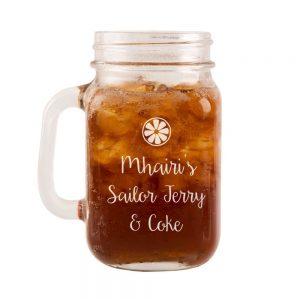
3. Headwear bandanas – Sahara Sailor 6 pack –
FUNCTION-Ideal used as a headband, cap, beanie, neck gaiter, wind or dust screen, balaclava, pirate-style cap, scarf or a helmet liner.
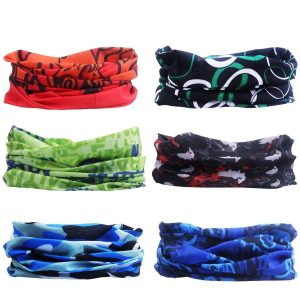
4. Password leather Sailors Notebook – Combination lock 112 page notebook
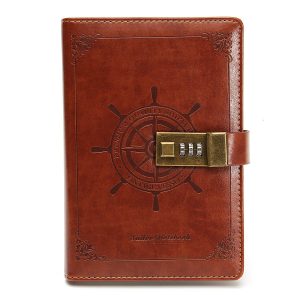
5. What Happens On The Boat, Stays On The Boat – wooden plaque for a bit of fun
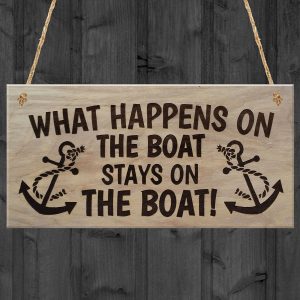
So there you have it. No excuse now for not knowing what to buy the sailor in your life. A few suggestions we have found, something for everyone. Hope you like them.
And to make it even easier for you to order them, just click on one of the links below and it will take you direct to Amazon’s web site where you can place your order. A few clicks and you could have got your “C” word gifts before we leave October! Now there’s a plan.





